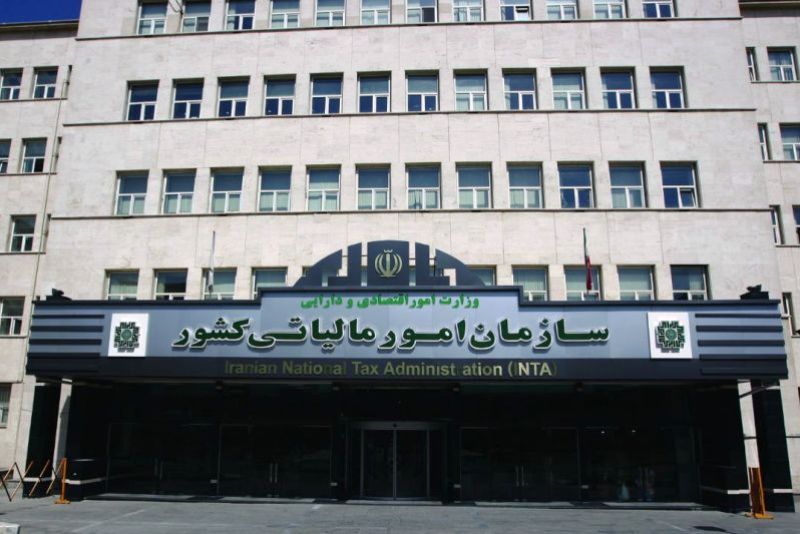The Iranian National Tax Administration collected 4,287 trillion rials ($7.88 billion) in tax during the first 11 months of the current fiscal year (started March 21, 2022).
According to the head of INTA’s Planning and Statistics Department, Mojtaba Amiri, the figure shows a 54% rise compared to tax income in last year’s corresponding period, IRNA reported.
“Over 2,660 rials [$4.88 billion] were collected in direct taxes, which indicate a 59% year-on-year rise,” he added.
Amiri noted that income from tax on goods and services rose 48% to stand at 1,620 trillion rials ($2.97 billion).
Davoud Manzour, the head of INTA, recently said the identification of new taxpayers and stemming tax evasion account for 60% of the rise in the government’s tax income.
On the remaining 40%, he said part of the increase in tax income comes with rising commodity prices, as the 9% value-added tax is an important form of taxation that increases in volume in line with rising prices.
Another aspect to rise in tax income, he added, is funded by manufacturing units’ exit from recession, which will increase value added generation.
Manzour noted that INTA came up with its own estimates of about 350,000 companies and three million individuals who failed to submit their tax declarations this year.
Stressing that the government pursues a policy of trusting taxpayers’ declarations, the INTA chief noted that only 5-10% of all declarations will be reviewed by the taxman.
Fiscal 2023-24 Budget Expects 59% Rise in Tax Income
The government intends to earn 8,380 trillion rials ($15.4 billion) in taxes as part of the upcoming Iranian year’s budget bill (March 2023-24). The figure shows a 59% rise compared to the current year’s budget.
President Ebrahim Raisi submitted the budget bill to the parliament on Jan. 11.
The submission was about one month late as it is due on the 15th day of the ninth Iranian month every year, which fell on Dec. 6, 2022, this year.
As ISNA reported, tax on legal entities has increased by 122% (the highest among different forms of taxes) to 2,960 trillion rials ($5.44 billion).
Income tax has surged by 45% to 1,220 trillion rials ($2.24 billion), capital tax has risen by 37% to 370 trillion rials ($680.14 million), tax on imports has surged by 67% to 1,290 trillion rials ($2.37 billion) and tax on goods and services has increased by 24% to 2,520 trillion rials ($4.63 billion).
The Iranian Parliament passed the outlines of the budget bill on Jan. 22.
No New Tax Bases/Rise in Rates
Allaying concerns about a further increase in taxes on businesses and salespeople, Mehdi Movahedi, the head of Fiscal Planning Center of INTA, recently said there will be no new tax bases or rise in tax rates.”
“A significant part of the rise [in tax income] owes to high inflation which is expected to stick above 40%,” he was quoted as saying by IRIB News.
Stressing that tax rates will remain the same as past year’s, Movahedi said efforts have been made to minimize pressure on the production and real economic sectors.
“Tax incomes have a 50% share in funding the government’s expenditure. We plan to maintain this share in the year ahead,” he added.
Echoing Manzour’s comments, he explained that INTA is looking to raise its income by collecting tax arrears as well as stemming tax evasions.
The Ministry of Economic Affairs and Finance announced earlier in 2022 new measures taken by the government, including connecting nine million point-of-sale (POS) terminals to the national taxation system and activating another nine million POS terminals.
“As a result, the number of taxpayers increased by three million by August 22 … The number of tax declarations submitted to the Iranian National Tax Administration increased from 3 million to 4.5 million by July 22,” Movahedi said.
The Comprehensive Taxpayers System, which is the main platform for the implementation of the law of shopping terminals, requires all sales and purchases to be registered in the form of electronic invoices.
The government says it aims to increase the share of taxes and reduce the share of oil revenues in the public budget as the income from the sale of natural resources, including oil, gas and mines, is supposed to be spent on the development of the country instead of being injected into the current budget.
The Budget Law stipulates that social media influencers with more than 500,000 followers who generate income from commercial activities will be subject to income tax.
Economy Minister Ehsan Khandouzi earlier communicated the directive on taxing influencers to the Iranian National Tax Administration.
“For INTA, it is not important whether the owner of the bank account is a dairy seller or a celebrity or an athlete. Artists will be exempt from tax if they earn less than 2,000 million rials [$3,676 per year]. All other celebrities who earn more must be taxed,” Manzour has been quoted as saying.
And as per a new approach employed by INTA, whistleblowing on tax evaders and other tax violations will be incentivized. The whistleblowing guidelines were communicated to tax offices on Feb. 27.
The public has been asked to log on to Intamedia.ir to report tax evasions and receive a special reward.
The Iranian National Tax Administration is expecting to add 900 trillion rials ($1.65 billion) to its income in the upcoming fiscal year (March 2023-24) by stemming tax evasion, Manzour had said earlier.
“We expects our tax income to account for 65% of government revenues [next year],” he added.
According to the INTA chief, the government forwent 3,400 trillion rials ($6.25 billion) worth of tax in the last Iranian year due to exemptions and the total volume of tax earnings during the period stood at 3,060 trillion rials ($5.62 billion).


